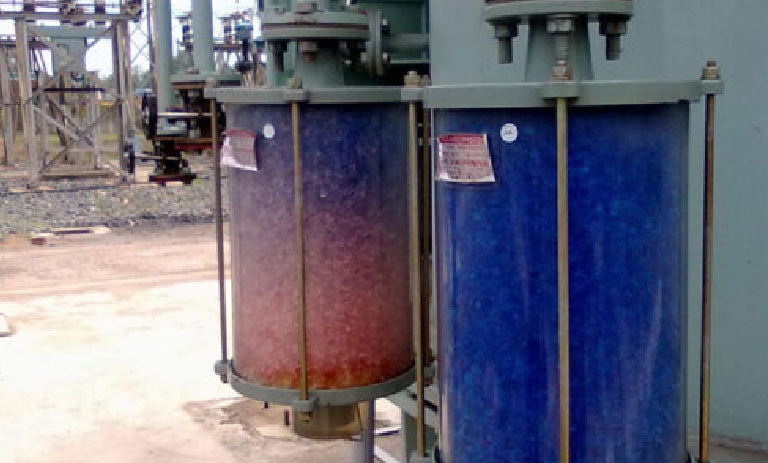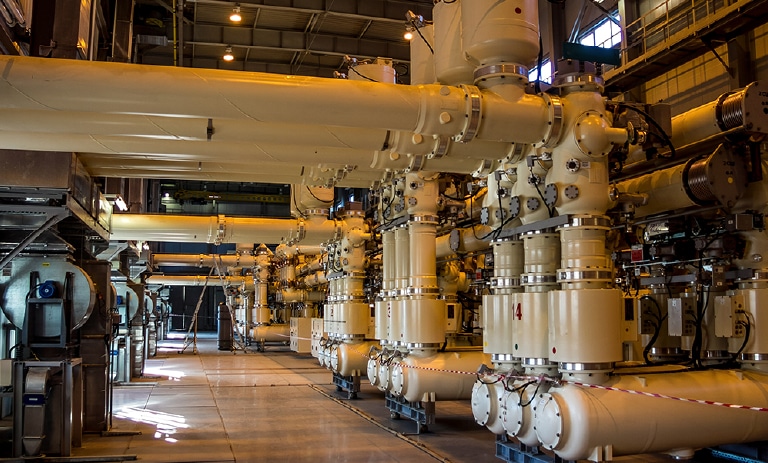Qualitrol Completes ISO 14001 Audit
Partial Discharge in Transformers & GIS
Qualitrol T&D World Article- Key Benefits of Smart Breathers

Featured in tdworld.com, Qualitrol discusses the “Key Benefits of Smart Breathers for Transformers“.
Transformers are one of the key assets and most expensive equipment in electrical utility companies. The life of the transformer generally depends on the longevity of solid insulation. Of the several factors that determine the life expectancy of solid insulation, those that have the greatest effect are temperature, moisture and oxidation. The temperature of solid insulation is the primary factor in transformer aging if moisture in the insulation is at a normal level (≤ 0.5 %).
The moisture in the insulation also has a great impact on the life of insulation and is not usually a consideration in loss of life calculations. Moisture is always present in the insulation system. The rate of thermal aging of paper is proportional to its moisture content. Aging calculations are based on ≤ 0.5 % moisture content with a corresponding aging acceleration factor of one. If the water content of paper is doubled, its life in terms of mechanical strength is halved. Moisture in solid insulation can also lead to bubble formation because it reduces the bubble inception temperature and reduces also the dielectric strength of the insulation system.
The three major contributors to the level of moisture in the insulation system are residual moisture from manufacturing, commissioning and maintenance processes, moisture produced by the aging of cellulose, and moisture from the atmosphere. This paper discusses reducing moisture ingress from the atmosphere.
Liquid preservation systems limit the exposure of the transformer insulation structure to the atmosphere while allowing thermal expansion and contraction of the liquid due to load and ambient temperature variations. These liquid preservation systems are:
a. Sealed Tank – A sealed tank system uses a gas space above the insulating liquid level of the main tank to absorb volume fluctuations. It can be regulated or static.
b. Conservator Tank – A conservator tank is an auxiliary tank partially filled with insulating liquid and connected to the completely filled main tank. It uses the gas space above the liquid for volume fluctuations. Conservator tanks can be free breathing or isolated from the atmosphere using a rubber air cell or diaphragm.
The conservator tank provides space for the expansion and contraction of the insulating liquid. As the insulating liquid heats, it expands, the liquid level rises, and air leaves the conservator tank. When the oil cools, it contracts, the liquid level falls, and fresh air from the atmosphere enters the conservator tank. This air contains moisture that, for free breathing transformers, can be transferred to the insulating liquid and then to the solid insulation. For isolated transformers, the moisture can condensate and become free water inside the rubber air cell. If the rubber air cell ruptures, this free water can fall inside the main tank and cause a catastrophic failure. Moisture may also accelerate the aging of the rubber air cell.
For these reasons, both types of conservator tanks are generally fitted with a breather. A breather is an accessory of liquid-immersed power transformers attached to the conservator tank. They serve as the breathing point of the transformer. The breather contains silica gel crystals which have a tremendous capacity of absorbing moisture. As air passes through these crystals in the breather, the moisture in the air is absorbed by the silica gel crystals. Therefore, air reaching the conservator is quite dry.
In essence, there are two types of breathers on the market today, traditional and smart breathers.
Traditional Breathers
Traditional breathers contain silica gel crystals. The color of the silica gel crystals is generally used as an indicator of when the silica should be replaced. It is dark blue when dry; when the gel absorbs moisture and becomes saturated, the color changes to pink (see Figure 1).

Traditional breathers require continual maintenance taking note of gel color changes indicating the need for replacement. The silica gel can be regenerated or discarded once the color changes. Traditional breathers are generally a cost-effective solution for initial installation but require frequent servicing depending on moisture levels in the atmosphere thereby incurring additional cost. When the silica gel is fully saturated, it will no longer absorb atmospheric moisture as it enters the transformer therefore the silica gel must be replaced. It is not uncommon for atmospheric moisture to enter the transformer through a fully saturated traditional breather that is past its maintenance requirement.

Both traditional breathers and smart breathers work well. Smart breathers have a larger upfront investment than traditional breathers. However, traditional breathers require constant maintenance and if overlooked, will allow ingress of moisture in the oil preservation system. This may cause aging acceleration of the insulation system and/or increase the risk of a possible failure.
Author: Emilio Morales is a Technical Application Specialist at Qualitrol Co. LLC
For more information on Qualitrol’s product line of Smart Breathers, you can check them out here. To download a copy of this article as a PDF, click on the link below.

